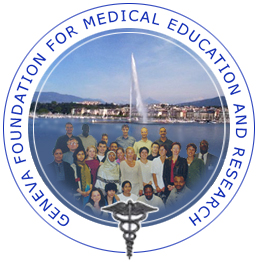Acute Toxicity and Liver Protective Effects of Elephantopus mollis H.B.K
doi.org/10.26538/tjnpr/v5i3.23
Keywords:
Elephantopus mollis, Folk remedies, Acute toxicity, Liver protectionAbstract
Elephantopus mollis (EM) is a wild species and is commonly used in folk medicine as remedy for various ailments. Some uses of this plant has been documented in the scientific literature. However, studies on the medicinal properties of this specie remain rarely published and the specie has not been recorded in the Vietnamese pharmacopeia. The present study therefore assessed the acute toxicity and liver-protective effects of Elephantopus mollis (EM). The acute toxicity of the aqueous extract of EM in mice was assessed following the method stipulated by the Organization for Economic Cooperation and Development (OECD), while the hepatoprotective effect was assessed following previously reported method. Whole plant extract of EM was not toxic to the tested mice (at a dose of 9,000 mg/kg) and showed good liver protection. The plant extract had the ability to reduce the degradation of liver cells by reducing the amount of liver enzymes. At a dose of 400 mg/kg EM, the reduction efficiency of AST and ALT in tested mice were 71.43 ± 11.36% and 63.82 ± 19.43%, respectively, when compared with the negative control group after 2 weeks of treatment. Mice liver morphology and histopathology treated with EM extract showed a decent improvement. The liver cells size of mice treated with EM extract decreased significantly (28.02 ± 6.33 µm) compared to the mice in the negative control group (34.82 ± 6.36 µm). The results suggest the potential effect of this extract as a hepatoprotective agent towards liver damage without any oral acute toxicity effect.
References
Ministry of Home affairs (MOHA), United Nations Population Fund in Vietnam (UNFPA). National Report on Vietnamese Youth (In Vietnamse). Ministry of Home Affairs. 2015.
Castelletti A, Pianosi F, Quach X, Soncini-Sessa R. Assessing water reservoirs management and development in Northern
Vietnam. Hydrol Earth Syst Sci. 2012; 16(1):189-199.
Bui T Van, Blizzard CL, Luong KN, Le Van Truong N, Tran BQ, Otahal P, Gall S, Nelson MR, Au TB, Ha ST, Phung HN. National survey of risk factors for non-communicable disease in Vietnam: prevalence estimates and an assessment of their validity. BMC Pub Health. 2016; 16(1):498.
Dang HV, Nguyen LT, Tran HT, Nguyen HT, Dang AK, Ly VD, Frazzoli C. Risk Factors for Non-communicable Diseases in Vietnam: A Focus on Pesticides. Front Environ Sci. 2017; 5:1-9.
Sacks G, Swinburn B, Kraak V, Downs S, Walker C, Barquera S, Friel S, Hawkes C, Kelly B, Kumanyika S, L'Abbé M. A proposed approach to monitor private-sector policies and practices related to food environments, obesity and noncommunicable disease prevention. Obes Rev. 2013; 14(S1):38-48.
Girgis A, Lambert S, Johnson C, Waller A, Currow D. Physical, Psychosocial, Relationship, and Economic Burden of Caring for People With Cancer: A Review. J Oncol Prac. 2013; 9(4):197-202.
Cheuka P, Mayoka G, Mutai P, Chibale K. The Role of Natural Products in Drug Discovery and Development against Neglected Tropical Diseases. Molecules. 2016; 22(1):58.
Kabiru A and Por LY. Elephantopus species: traditional uses, pharmacological actions and chemical composition. Adv Life Sci Technol. 2013; 15:6-13.
Kuete V, Fokou FW, Karaosmanoğlu O, And VPB, Sivas H. Cytotoxicity of the methanol extracts of Elephantopus mollis, Kalanchoe crenata and 4 other Cameroonian medicinal plants towards human carcinoma cells. BMC Compl Altern Med. 2017; 17(280):1-9.
Bich Ngoc TT, Hoai Nga NT, My Trinh NT, Thuoc TL, Phuong Thao DT. Elephantopus mollis Kunth extracts induce antiproliferation and apoptosis in human lung cancer and myeloid leukemia cells. J Ethnopharmacol. 2020; 263:113222.
Pham HH. An Illustrated Flora of Vietnam. Vol 2. Ho Chi Minh: Tre’ Publishing House. 2003. 952 p.
Le KB. Flora of Vietnam. Ha Noi: Science and Technics Publishing House. 2007. 724 p.
Ukwubile CA, Ahmed A, Katsayal UA, Ya’u J, Mejida S. GC–MS analysis of bioactive compounds from Melastomastrum capitatum (Vahl) Fern. leaf methanol extract: An anticancer plant Sci Afr. 2019; 3:e00059.
Ukwubile CA. Acute and subchronic toxicity profiles of Melastomastrum capitatum (Vahl) Fern. (Melastomataceae) root aqueous extract in Swiss albino mice. Prog Chem Biochem Res. 2019; 2(2):74-83.
Kang H, Koppula S. Hepatoprotective Effect of Houttuynia cordata Thunb Extract against Carbon Tetrachloride-induced Hepatic Damage in Mice. Indian J Pharm Sci. 2014; 76(4):267–273.
Xia T, Zhang B, Duan W, Li Y, Zhang J, Song J, Zheng Y, Wang M. Hepatoprotective efficacy of Shanxi aged vinegar extract against oxidative damage in vitro and in vivo. J Func Foods. 2019; 60:1-10.
Faheem MK, Prasad BV, Beltagy AA. Comparative analysis of hematological parameters determined by Cell-Dyn Ruby automated hematology analyser and manual analysis. IOSRJDMS2018. 2018; 17(5):54-59.
Movahedi A, Basir R, Rahmat A, Charaffedine M, Othman F. Remarkable Anticancer Activity of Teucrium polium on Hepatocellular Carcinogenic Rats. Evid-Based Compl Altern Med. 2014; 2014:1-9.
Balogun F and Ashafa A. Antioxidant and hepatoprotective activities of Dicoma anomala Sond. aqueous root extract against carbon tetrachloride-induced liver damage in Wistar rats. J Trad Chinese Med. 2016; 36(4):504-13.
NVL SR, Anjum M, Aveti S, M GR. Hepatoprotective Activity of Methanolic Extract of Whole Plant of Rhynchosia beddomei in Wistar Rats. J Pharm Chem Biol Sci. 2015; 3(3):378-387.
Athokpam R, Bawari M, Choudhury MD. hepatoprotective activity of aqueous extract of Oxalis debilis Kunth against CCl4 -induced liver damage. Asian J Pharm Clin Res. 2017; 10(9):231.
Singhal KG and Gupta GD. Hepatoprotective and antioxidant activity of methanolic extract of flowers of Nerium oleander against CCl4–induced liver injury in rats. Asian Pac J Trop Med. 2012; 5(9):677-685.
Yang C-L, Lin Y-S, Liu K-F, Peng W-H, Hsu C-M. Hepatoprotective mechanisms of Taxifolin on carbon tetrachloride - induced acute liver injury in mice. Nutr. 2019; 11(11):2655.
Zarezade V, Moludi J, Mostafazadeh M, Mohammadi M, Veisi A. Antioxidant and hepatoprotective effects of Artemisia dracunculus against CCl4-induced hepatotoxicity in rats. Avicenna J Phytomed. 2018; 8(1):51-62.
Published
How to Cite
Issue
Section
License

This work is licensed under a Creative Commons Attribution-NonCommercial-NoDerivatives 4.0 International License.

















